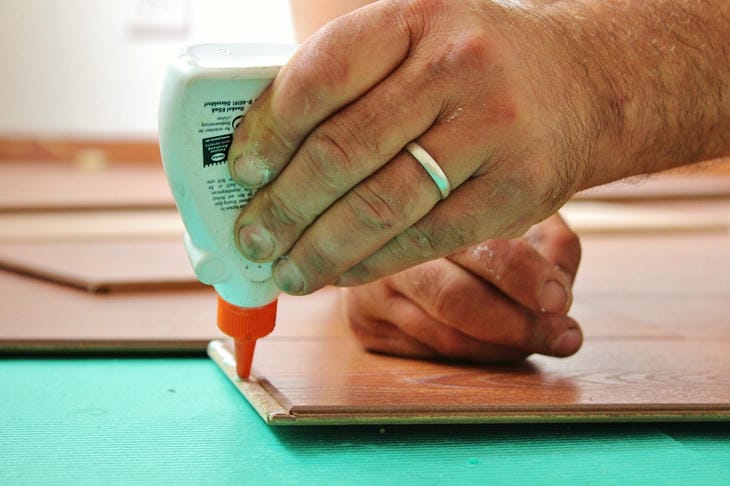How to remove traces of dried superglue: practical tips for different surfaces
Dried super glue can cause a lot of trouble, especially if it gets on your clothes, furniture or skin.
It is important to know how to properly remove such marks so as not to damage the surface and completely get rid of the glue residue.
Using the wrong products or methods can make the problem worse, so you need to approach this issue with caution.
Removing Super Glue from Skin
When superglue gets on your skin, it's important to act quickly. One of the most effective remedies is acetone, which is often found in nail polish removers.
To do this, soak a cotton pad in acetone and carefully wipe off the dried glue, being careful not to damage the skin.

If you don't have acetone at hand, you can try using warm soapy water. The skin is dipped in warm water for a few minutes, after which the glue is carefully rolled off the surface.
For sensitive skin, you can use Vaseline or vegetable oil to help soften the glue and make it easier to remove.
Cleaning of fabrics and clothes
Superglue on clothing can be a serious problem, as its traces often remain visible even after removal.
In such cases, it is recommended to use products with acetone, but before use, you need to check how the fabric reacts to this solvent.
To do this, apply a small amount of acetone to an inconspicuous area of the fabric and check whether the color or structure of the material has changed. If the fabric is resistant to acetone, the glue stain is carefully wiped with a damp cotton pad.
It is important to proceed carefully so as not to damage the fabric. If acetone is not suitable, you can use a solution of water and soda, which is gentle on the glue and makes it easier to remove.
Removing superglue from furniture and hard surfaces
Acetone is also used to remove superglue from wood, plastic or glass surfaces.
It is important to remember that acetone can damage varnished or painted surfaces, so test on a small, inconspicuous area before use.
If acetone causes discoloration or damage, it is better to use alternative methods. For example, for glass surfaces, you can use a razor blade to gently scrape off the adhesive.
The blade should be held at an angle to avoid scratching the glass. Plastic surfaces can be cleaned with warm soapy water or a vinegar solution.
How to Remove Super Glue from Metal Objects
Metal objects often suffer from super glue, especially if they have a smooth surface.
To remove glue from metal, you can use alcohol or acetone, which effectively dissolve the glue and make it easier to remove. The metal is moistened with the selected solvent, then the glue is carefully removed with a soft cloth or sponge.
For hard to reach areas, you can use a soft bristled toothbrush. If there is a lot of glue, you can use a thin blade to carefully lift it off the surface.
Removing superglue from carpets and upholstered furniture
Superglue on carpets and upholstered furniture requires special attention, as the fabric can be easily damaged. It is important to remove excess glue from the surface immediately before it dries.
To do this, you can use a blunt object, such as a spoon, to gently remove the glue. If the glue has already dried, an acetone-based solvent will come to the rescue. But before using it, you should test it on a small area of the fabric to make sure it is resistant.
If acetone doesn't work, you can try using a mixture of vinegar and warm water, which will help soften the glue and make it easier to remove.
For reference
A spot is a place or area that stands out in color from the rest of the surface, or a place that is dirty or smeared with something.
